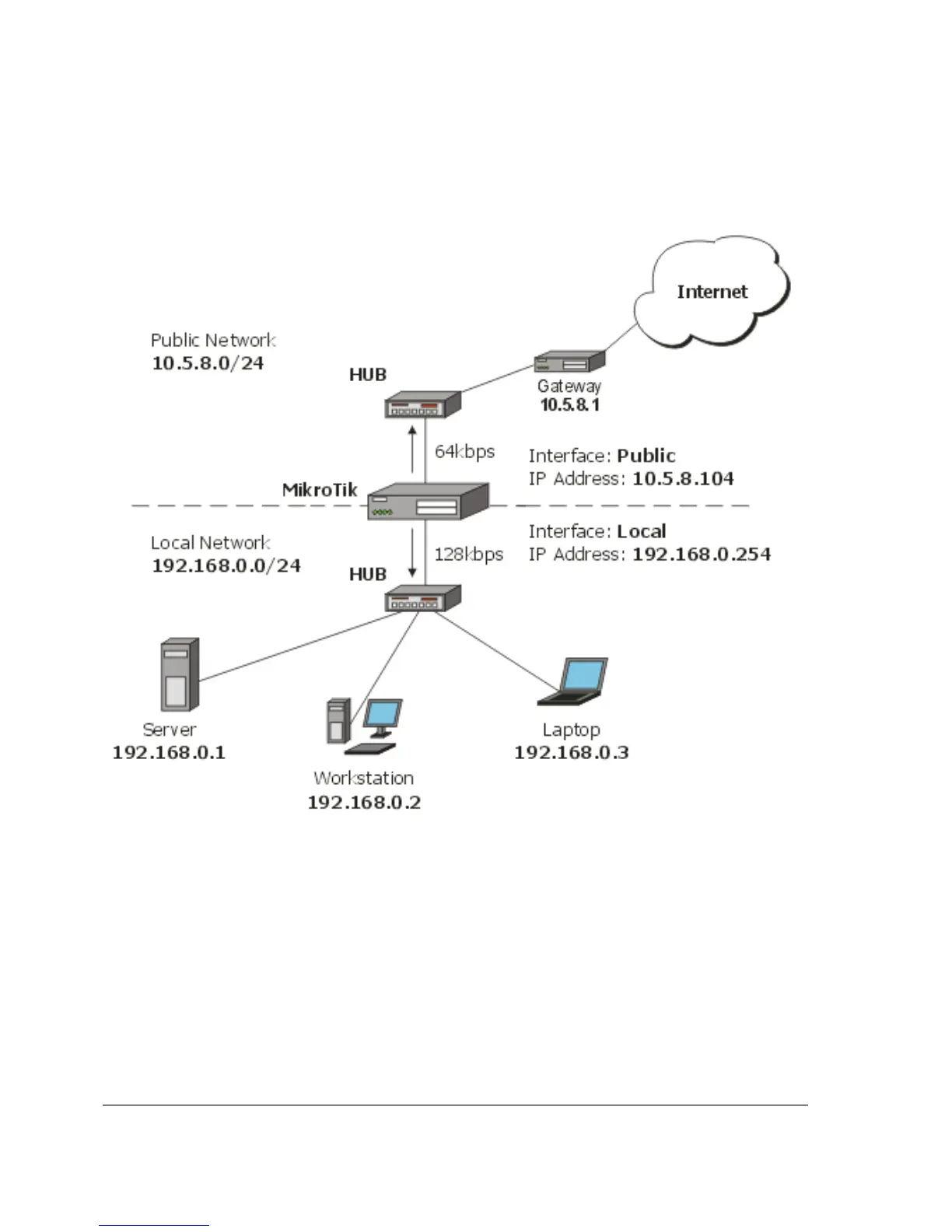Example of emulating a 128Kibps/64Kibps Line
Assume, we want to emulate a 128Kibps download and 64Kibps upload line, connecting IP
network 192.168.0.0/24. The network is served through the Local interface of customer's router.
The basic network setup is in the following diagram:
To solve this situation, we will use simple queues.
IP addresses on MikroTik router:
[admin@MikroTik] ip address> print
Flags: X - disabled, I - invalid, D - dynamic
# ADDRESS NETWORK BROADCAST INTERFACE
0 192.168.0.254/24 192.168.0.0 192.168.0.255 Local
1 10.5.8.104/24 10.5.8.0 10.5.8.255 Public
[admin@MikroTik] ip address>
And routes:
[admin@MikroTik] ip route> print
Flags: X - disabled, A - active, D - dynamic,
C - connect, S - static, r - rip, b - bgp, o - ospf
# DST-ADDRESS G GATEWAY DISTANCE INTERFACE
Page 432 of 695
Copyright 1999-2007, MikroTik. All rights reserved. Mikrotik, RouterOS and RouterBOARD are trademarks of Mikrotikls SIA.
Other trademarks and registred trademarks mentioned herein are properties of their respective owners.
